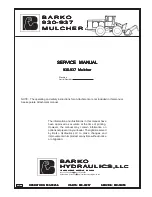
Test mode summary
16
Insulation resistance ‘IR’ test
16
Breakdown mode / burn mode
16
Alarm limit mode
16
Step voltage ‘SV’ test
17
Polarisation index ‘PI’ test, and dielectric absorption
ratio ‘DAR’ test
17
Dielectric discharge ‘DD’ test
17
Measurements above 100 G
Ω
18
Circuit block diagram
19
Specifications 20
Accessories 21
Repair and warranty
22
Battery replacement
22
Symbols used on the instrument are:
F
Caution: risk of electric shock
G
Caution: refer to accompanying notes
t
Equipment protected throughout by Double
Insulation (Class II)
c
Equipment complies with current EU directives.
This equipment should be recyled as electronic
waste.
Terms used in this manual
The word
must
is used to indicate that the instructions following should be
followed under all circumstances. Failure to follow these instructions could
result in damage to the instrument and / or a hazard to the operator.
The word
should
is used to indicate that the instructions indicate best practice.
CONTENTS
3
Safety warnings
2
Introduction 4
General description
4
Features
4
Cleaning
4
Power lead and battery charging
5
Instrument controls and indicators
6
Power On/Off button
7
Test voltage
s
and
t
buttons
7
Test start / stop button
7
Ω
/I button
7
B
button
10
Fn button
10
Mode button
10
Timer
s
and
t
buttons
11
Record button
11
Recording to on-board memory
11
Downloading results
11
Deleting results
11
Recording to a PC
12
High voltage warning LED
12
Line input present LED
12
Test terminals
12
Guard terminal
12
RS232 / USB connections
13
Battery bar graph
13
Voltage at terminals
13
Timer indicator
13
Digital display
13
Analogue display
14
Secondary display
14
Pre-Test / during test key action table
14
Breakdown detection
15
Noise detection
15




































